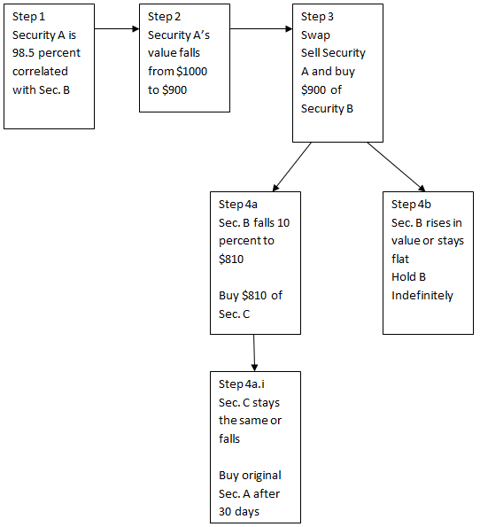Bill Bischoff for MarketWatch / WSJ writes:Lots of folks are going back to school to improve their standing in today’s still-tough job market, and there are some helpful tax breaks for doing so. In an earlier article (Want a tax break? Go back to school) , I explained when you can claim the American Opportunity tax credit (up to $2,500) or the Lifetime Learning tax credit (up to $2,000) for your education expenses. But what if you don’t qualify for a credit? This could happen because you don’t meet the eligibility rules (a distinct possibility with the American Opportunity credit) or because your income is too high (a distinct possibility with the Lifetime Learning credit). Don’t give up hope. There is another important break that might work for you.

Robert Pernell / Shutterstock.com
Claim Page 1 Deduction for Education Expenses
Our beloved Internal Revenue Code allows you to claim a limited deduction for qualified tuition and fees on page 1 of Form 1040. The good thing about the page 1 deduction is you don’t have to itemize to benefit. Depending on your income, the maximum write-off is either $4,000 or $2,000 (more on that later).
Eligibility Rules and Qualified Expenses:
You can’t claim the page 1 deduction for your own tuition and fees if you claim either the American Opportunity credit or the Lifetime Learning credit for your own expenses. No double dipping! However, you’re allowed to claim the deduction while claiming a credit for expenses incurred for your spouse or child.
You’re ineligible for the deduction if you’re married and don’t file a joint Form 1040.
Also, the IRS says you must already have a high school diploma or GED in order to claim the deduction.
Qualified expenses include tuition, mandatory enrollment fees, and course materials including books and supplies. However, the IRS says you can only deduct books and supplies if you’re required to purchase them directly from the school. And you can’t deduct optional fees for things like student activities and insurance. Room and board costs are off limits too.
The tuition and fees must be to attend an eligible institution. Virtually all accredited public, nonprofit, and for-profit postsecondary schools pass this test, as well as some vocational schools. Eligible institutions are given Federal School Codes, which you should be able to verify online at www.fafsa.gov.

Robert Pernell / Shutterstock.com
Although you can only claim the page 1 deduction for expenses to attend an institution that offers some sort of postsecondary degree or credential, you don’t actually have to pursue a degree or credential to claim the deduction. For example, you can claim it for career-related courses and professional certification courses offered by a university, community college, or any other eligible institution.
Finally, you can claim a 2013 deduction for qualified tuition and fees that you pay this year for courses in academic periods that begin either this year or in January through March of 2014. So prepaying some expenses that are due early next year before the end of this year could lower your 2013 tax bill.
Maximum Deduction and Income Cut-Off Rule:
If you’re unmarried with modified adjusted gross income (MAGI) of $65,000 or less, the page 1 deduction equals the lesser of: (1) $4,000 or (2) 100% of qualified tuition and fees. Ditto if you’re a married joint filer with MAGI of $130,000 or less ($4,000 is the maximum deduction even when both spouses have qualified expenses).
If you’re unmarried with MAGI between $65,001 and $80,000, the maximum deduction is reduced to the lesser of: (1) $2,000 or (2) 100% of tuition and fees. Ditto if you’re a married joint filer with MAGI between $130,001 and $160,000 ($2,000 is the maximum deduction even when both spouses have qualified expenses).
If your MAGI exceeds the $80,000 or $160,000 ceiling (whichever applies), you get no deduction at all. Sorry.
MAGI means “regular AGI” from the last line on page 1 of your Form 1040 increased by certain tax-exempt income from outside the U.S. and the deduction for domestic production activities. (These adjustments are rather unlikely to apply to you.)
What If I Could Claim Either the Deduction or a Credit?
Good question, because it can happen. As I said earlier, you can’t claim both the page 1 deduction and the American Opportunity credit or the Lifetime Learning Credit for expenses incurred by the same student (you in this case). So you have to pick Door No. 1 or Door No. 2.
If you qualify for the rather generous American Opportunity credit, it will deliver more tax savings than the deduction in any situation I can imagine. So claim the credit.
In the more common scenario where you qualify for the Lifetime credit but not the American Opportunity credit, it can sometimes be a close call in figuring out whether the Lifetime credit or the deduction will cut your tax bill more. The trade-off gets complicated because it depends on the amount of qualified education expenses, your marginal tax rate, and whether the credit phaseout rules apply. The only sure way to find out which break is best is to fill out Form 8863 to calculate the credit and Form 8917 to calculate the deduction. Then complete the rest of your return to see which one lowers your tax bill the most. Pick that one.

